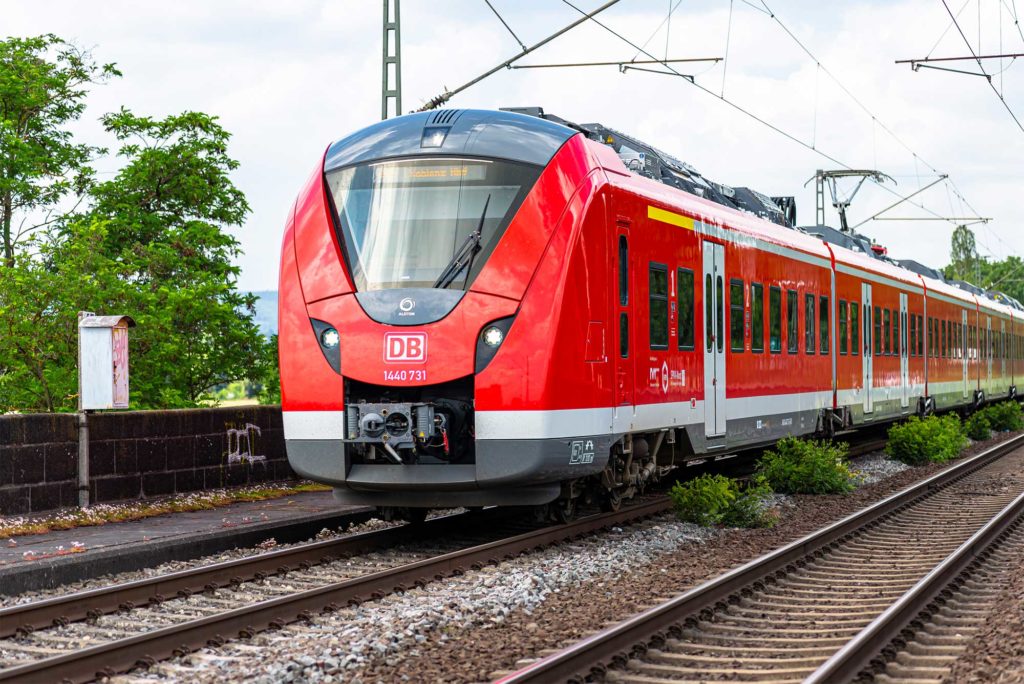S-Bahn Hamburg: Hanseatic city becomes a pioneer for digital rail operations. Passengers benefit from a larger range of trains and more punctuality.
Deutsche Bahn (DB) and Siemens have developed the world’s first train that runs on its own in rail traffic. Dr. Richard Lutz, CEO of DB, and Dr. Roland Busch, CEO of Siemens AG, presented the vehicle for the Digital S-Bahn Hamburg project together with Dr. Peter Tschentscher, First Mayor of the Free and Hanseatic City of Hamburg, on the premiere drive.
The train is controlled by digital technology and runs automatically. The train drivers remain on board to monitor the journey with passengers. The manoeuvring – for example the turn of the train – takes place without personnel. The project partners DB, Siemens Mobility and the City of Hamburg have invested a total of 60 million euros in the digital S-Bahn Hamburg, which is part of DB’s Digital Rail Germany program.
“Today we are experiencing a real change of times: the railroad has arrived in the digital future and the digital rail in Germany has become a reality. With automatic rail operations, we can offer our passengers a significantly larger, more reliable and therefore better service – without having to build a new kilometre of track. Our goal: to make railways attractive to more and more people. Only in this way can the mobility transition succeed. ”
Dr. Richard Lutz, CEO of DB
“We’re making rail traffic more intelligent. Trains automatically run the perfect timetable, accurate to the second and energy-optimized, ”
Dr. Roland Busch, CEO of Siemens AG
“We are thus helping our partner Deutsche Bahn achieve its goal of making train travel more attractive and protecting the climate. Because with our technology, our customers can transport up to 30 percent more passengers, significantly improve punctuality and save more than 30 percent energy. The digital S-Bahn Hamburg is a world first. The new technology has already been approved and because it has open interfaces, all operators worldwide can use it immediately for all train types. “
“There is a lot of potential in digitization for the entire Hamburg S-Bahn network. We are creating greater capacities on the existing tracks and improving reliability and punctuality when traveling by train. The premiere of the digital S-Bahn as part of the ITS World Congress is a strong signal for efficient and climate-friendly mobility of the future. ”
Dr. Peter Tschentscher, First Mayor of the Free and Hanseatic City of Hamburg
The premiere of the digital S-Bahn took place at the start of the ITS World Congress (Intelligent Transport Systems) in Hamburg. During the congress, four digital S-Bahn trains run automatically on the 23-kilometer section of S-Bahn line 21 between the Berliner Tor and Bergedorf / Aumühle stations.
The technical basis for digital rail operations is the future European standard ATO (Automatic Train Operation) combined with the European train control system ETCS (European Train Control System). The trains receive the control signals via radio. From December, the four digital S-Bahn trains in Hamburg will be running according to the schedule. The plans to equip the Hamburg S-Bahn by the end of the decade are already underway, and investments in trains and infrastructure have started. In the future, the technology should also be used nationwide in regional and long-distance transport.

DB presents further innovations at the ITS World Congress in Hamburg
From October 11 to 15, Hamburg will be the global showcase for the future of mobility with the ITS Congress. Companies from all over the world show their innovations at the world’s largest trade fair for transport and logistics. The DB presents innovations in infrastructure, train stations, long-distance and local transport and connection mobility. Just last year, DB and the City of Hamburg extended their smart city partnership agreed in 2017 for a further five years. Both partners want to use digital technologies and innovative ideas to make local public transport and train stations more attractive for customers.
This can already be seen at the Dammtor train station, the entrance gate to the ITS Congress: improved traveller information with new train indicators and new route guidance help all travellers and guests to find their way around. Showcases designed by artists create a special atmosphere in the train station.










